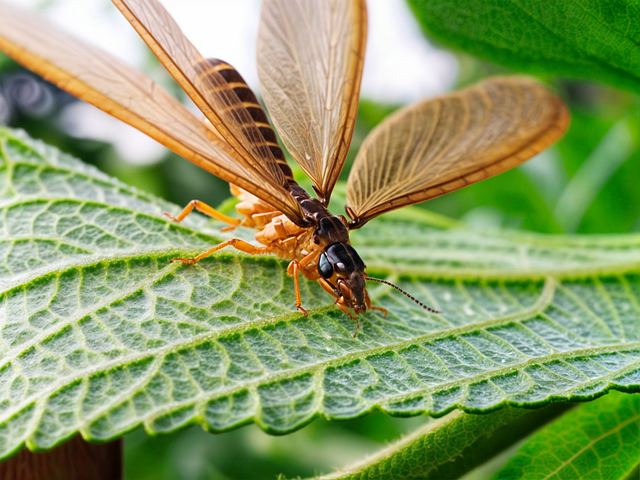Drywood termites, unlike subterranean termites, infest wooden structures without soil, creating tunnels within wood. Traditional detection methods like visual inspections and chemical treatments are imprecise and harmful. Advanced technologies, including termite detection dogs, remote sensing, and artificial intelligence, offer more efficient and accurate solutions. Recent innovations in drywood termite treatment focus on eco-friendly non-chemical alternatives, such as heat treatment, microwave technology, natural predators, and essential oils, providing safer and more sustainable control options.
Drywood termites, silent invaders of wood structures, cause significant damage globally. This article delves into cutting-edge technologies revolutionizing the way we detect and treat these elusive pests. From traditional methods with limitations to advanced locational techniques and innovative non-chemical treatments, this comprehensive guide explores effective drywood termite treatment options available today, offering a glimpse into the future of termite management.
Understanding Drywood Termites: Behavior and Damage
Drywood termites are a significant pest in many parts of the world, known for their ability to infest and damage wooden structures. Unlike their close relatives, subterranean termites, drywood termites don’t require soil to survive and reproduce. Instead, they thrive in dry wood, often found in homes, furniture, or even outdoor structures. Understanding their behavior is crucial when it comes to effective drywood termite treatment.
These termites live in small colonies, with each colony consisting of kings, queens, workers, and soldiers. They don’t build elaborate mud tubes like subterranean termites but instead create tunnels within the wood they infest. Drywood termites are highly mobile, capable of traveling several meters from their original source of wood. Their primary food source is cellulose found in wood, which makes them a potential menace to buildings and valuable wooden possessions. Identifying their unique behavior patterns and preferences is key to implementing successful drywood termite treatment strategies.
Traditional Detection Methods and Their Limitations
Traditional methods for detecting drywood termites often rely on visual inspections and the identification of damage signs, such as wood shavings or hollowed-out areas. While this approach has been used for centuries, it has significant limitations. These techniques are time-consuming, requiring thorough searches by trained professionals, and they may not always be effective in finding hidden infestations. Termites are elusive creatures, burrowing deep into structural wood, making them difficult to spot without advanced tools.
Furthermore, many traditional methods have low accuracy rates, leading to false negatives or positives. Chemical treatments, for instance, can be harmful to the environment and human health if not applied correctly. As such, there is a growing need for innovative solutions in drywood termite treatment. Advanced technologies offer more efficient, precise, and eco-friendly alternatives, revolutionizing how we combat these persistent pests.
Advanced Technologies for Locating and Identifying Infestations
Advanced technologies have transformed the way we locate and identify drywood termite infestations, revolutionizing the field of drywood termite treatment. Traditional methods like visual inspections and sniffing dogs are still used, but modern tools offer increased precision and efficiency. Termite detection dogs, for instance, can quickly pinpoint infested areas by detecting specific chemicals released by termites. This non-invasive approach is particularly useful in hard-to-reach spaces or structures with complex architectures.
Remote sensing technologies, such as aerial imaging and thermal sensors, are also making waves. These tools can identify subtle changes in wood structure or temperature variations caused by termite activity, enabling early detection even before visible signs appear. Furthermore, the integration of artificial intelligence (AI) and machine learning algorithms enhances the accuracy of these systems, allowing for more targeted and effective drywood termite treatment strategies.
Innovative Treatment Options: From Chemical to Non-Chemical Approaches
In recent years, advancements in technology have led to innovative treatment options for drywood termites, shifting from traditional chemical-based methods to more eco-friendly non-chemical alternatives. One prominent development is the use of heat treatment, which involves applying targeted heat to eliminate termites and their eggs. This method is particularly effective as it doesn’t leave behind harmful residues, making it a safer option for both humans and the environment. Additionally, microwave technology has been explored, focusing on generating microwaves to disrupt termite metabolism and ultimately lead to their demise.
Non-chemical treatments have also gained traction due to their minimal impact on the ecosystem. These methods include using natural predators like certain insect species or introducing microorganisms that are hostile to termites. Another novel approach is the application of essential oils, which have shown promise in repelling and eliminating termites. As research continues, these advanced technologies offer promising solutions for effective drywood termite treatment while minimizing environmental concerns.
In light of the above discussions, it’s evident that advanced technologies are transforming the way we detect and treat drywood termite infestations. From innovative location methods to non-chemical treatment options, these advancements offer more effective and environmentally friendly solutions for managing these pests. By understanding the behavior and damage caused by drywood termites, professionals can now employ cutting-edge tools to identify and mitigate issues promptly. This shift towards advanced technologies promises a brighter future in the battle against drywood termite treatment, ensuring safer and more sustainable homes for all.
